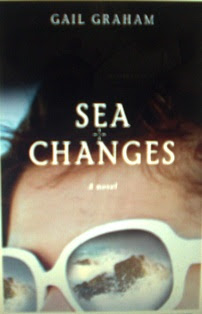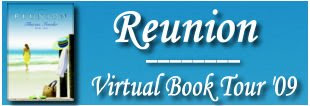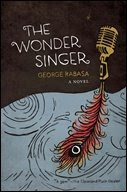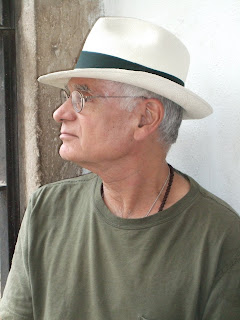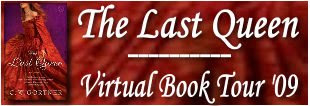
Without further ado, here’s Emily and her writing space.
I do most of my writing in a small white room, typically with at least one cat on my desk. I’ve thought about repainting (the room, not the cat), because off-white is pretty unadventurous, but I’m typically paralyzed by indecision when I visit paint stores and I have to admit, there’s something restful about the pallor of the room.

There are photographs on the walls—street and subway photography from New York, Rome, and Montreal—and also two images from Google Maps that I find particularly gorgeous; both are satellite images of the north coast of Russia, improbable greens and deep blues and frozen lakes like silver mirrors. They remind me of stained glass. There’s also a particularly nice letter from my agent, which I keep on the wall for encouragement purposes; a poster for La Femme Nikita; and the most famous section from Raymond Chandler’s essay The Simple Art of Murder written out on a piece of scrap paper (“In everything that can be called art there is a quality of 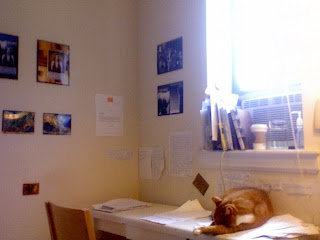
Just above my desk there are innumerable little scraps of paper taped to the wall, containing notes of varying depth and legibility related to whatever project I’m presently working on. This is because my note-taking system isn’t particularly organized or actually even really a system, and there’s always some risk of losing whatever idea just occurred to me (see paragraph 2: “avalanches of loose-leaf paper”) if I don’t immediately stick it on the wall in front of my face.
I’ll occasionally become desperate for a change of scene 
Thanks again to Emily for sharing with us her writing space. Stay tuned tomorrow for my review of Last Night in Montreal.
Until then, check out this video and this post by Emily at Powell’s Books.
Don’t forget my current giveaways:
2-year Blogiversary
Secrets to Happiness






